
 |
|
|||||||
| FM/DM threads Everything about FM/DM in CoD |
 |
|
|
Thread Tools | Display Modes |
|
|
|
#1
|
|||
|
|||
|
Yup, that's what the pilot's handbook says for the Mk.IV.
100 octane only when the long range outer tanks are needed for take off and cruise to target, 87 octane in the inner tanks for all other cases (return from target on long range missions, or the entire mission in case of short range hops). |
|
#2
|
|||
|
|||
|
Quote:
See attached papers David has posted a while ago and compared them to the April note by Mike above. It would also mean that Blenheims consumed far more than originally thought.
__________________
Il-2Bugtracker: Feature #200: Missing 100 octane subtypes of Bf 109E and Bf 110C http://www.il2bugtracker.com/issues/200 Il-2Bugtracker: Bug #415: Spitfire Mk I, Ia, and Mk II: Stability and Control http://www.il2bugtracker.com/issues/415 Kurfürst - Your resource site on Bf 109 performance! http://kurfurst.org 
Last edited by Kurfürst; 02-25-2012 at 08:58 AM. |
|
#3
|
|||
|
|||
|
Guys the 100 oct justified itself whenn it comes to hve low alt extra power (short time) or increased fuel efficiency at low revs. That's why you see that kind of usage on the Blenheim.
It's not compatible with any highly charged eng usage untill the eng was specifically designed for (impeller etc...) We hve alrdy say tht and this show that 100 oct usage by high flyng Spit makes no sense*. Temp issue with the usage of that fuel were to be found even in 1945 with some latte war engines. Moreover 100 oct costed twice as much as 87 oct fuel. This in pre-war doc. I think at today high soaring fuel cost you will easily imagine that this can draw attention of any war planners. The only raison tht I see any large FC usage of 100oct is for a low alt air campaign such as to fight back to the sea any German ground force steping on English soil. *Now the first Spits IIa reached Op unit in mid september if I do recall well. Those type being the only succeptible to hve an eng upgraded if ever they had. |
|
#4
|
|||
|
|||
|
Fighters that need to intercept a high flying enemy first need to climb to that high altitude. It makes a lot of sense to reduce the climb time through the first 10,000 feet to a minimum by the use of highest engine power available (which required 100 octane fuel), especially if you can't detect the enemy on a long distance.
|
|
#5
|
|||
|
|||
|
Quote:

|
|
#6
|
|||
|
|||
|
These documents relating to fuel requirments of the the Advanced Air Stiking Force and the Air Component, both in France during May 1940, give some idea of consumption, stocks, and how fuel requirements were calculated. As can be seen the Hurricanes used 100 octane, the Blenheim used a mix, while the Battle and Lysander used 87 octane, as did any transport, liason, visiting types etc.
      
|
|
#7
|
|||
|
|||
|
To underscore the above documentation of Hurricanes using 100 octane fuel in France please note the following:
P/O John Bushell, 151 Squadron, 18 May 1940 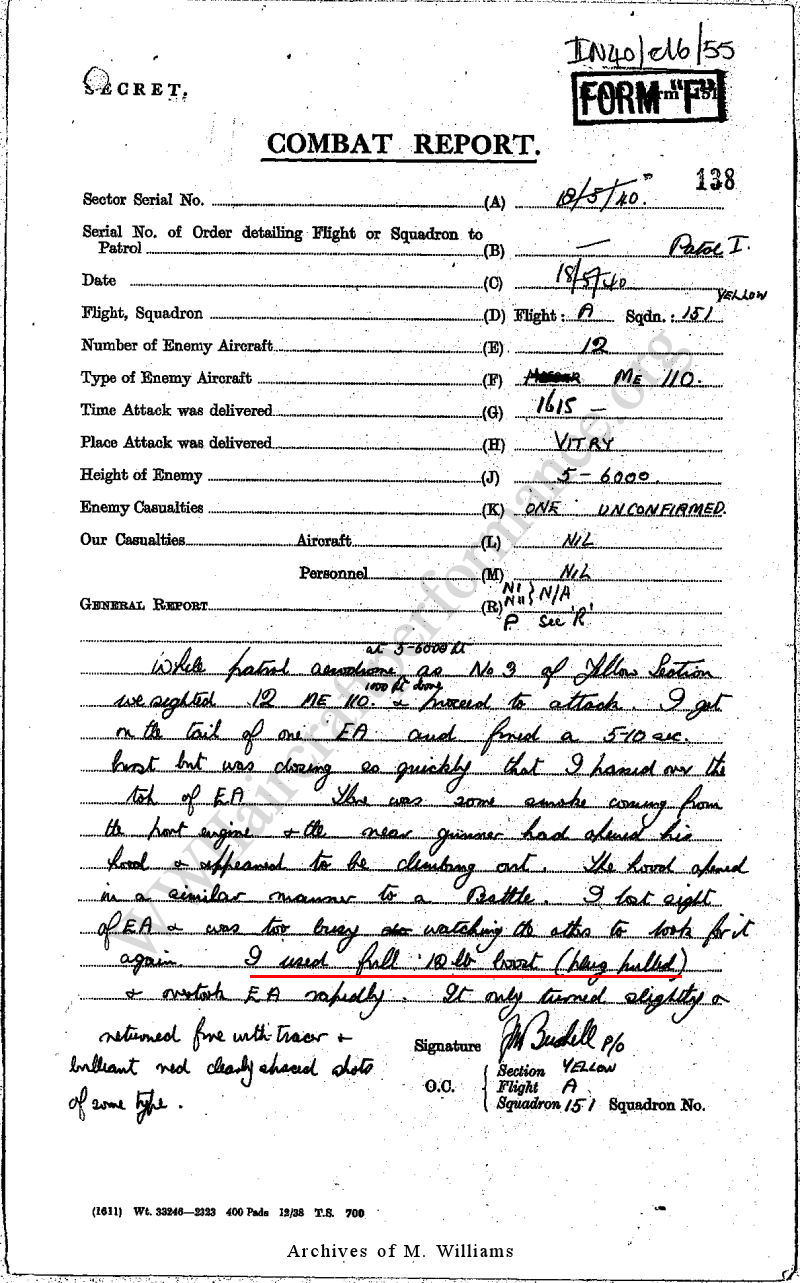 F/O Paul Richey, 1 Squadron, 11 May 1940  F/O E. J. Kain, 73 Squadron, 14 May 1940 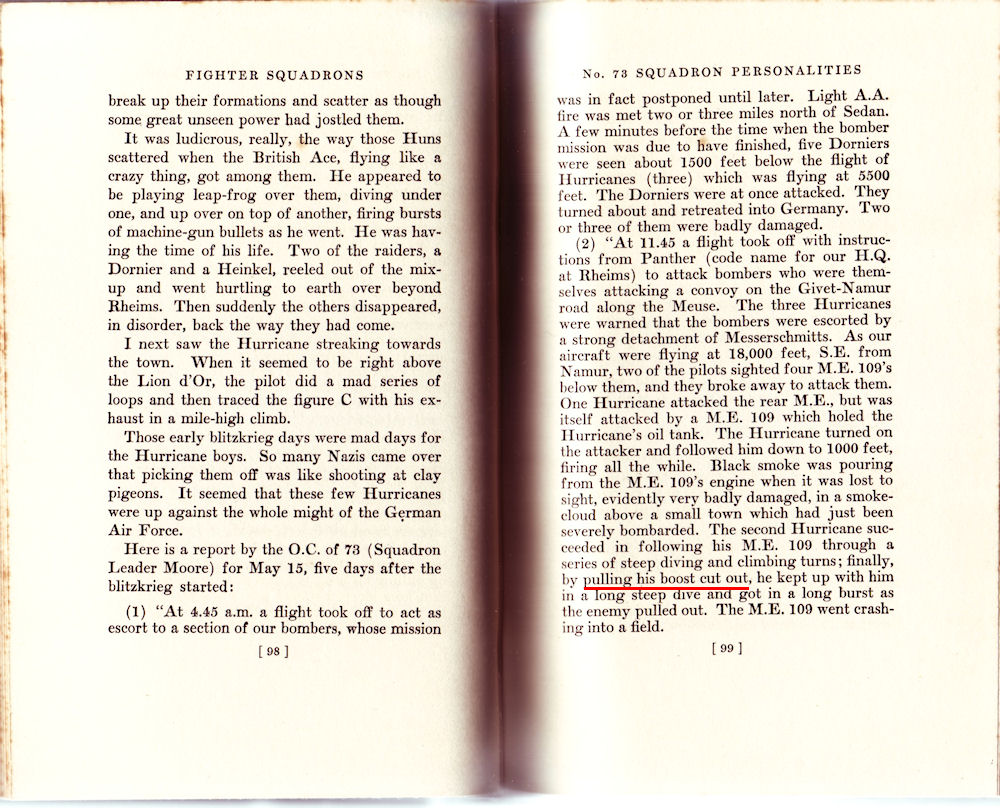 P/O D. W. A. Stones, 79 Squadron, 14 May 1940  P/O R. P. Beamont, 87 Squadron, 15 May 1940 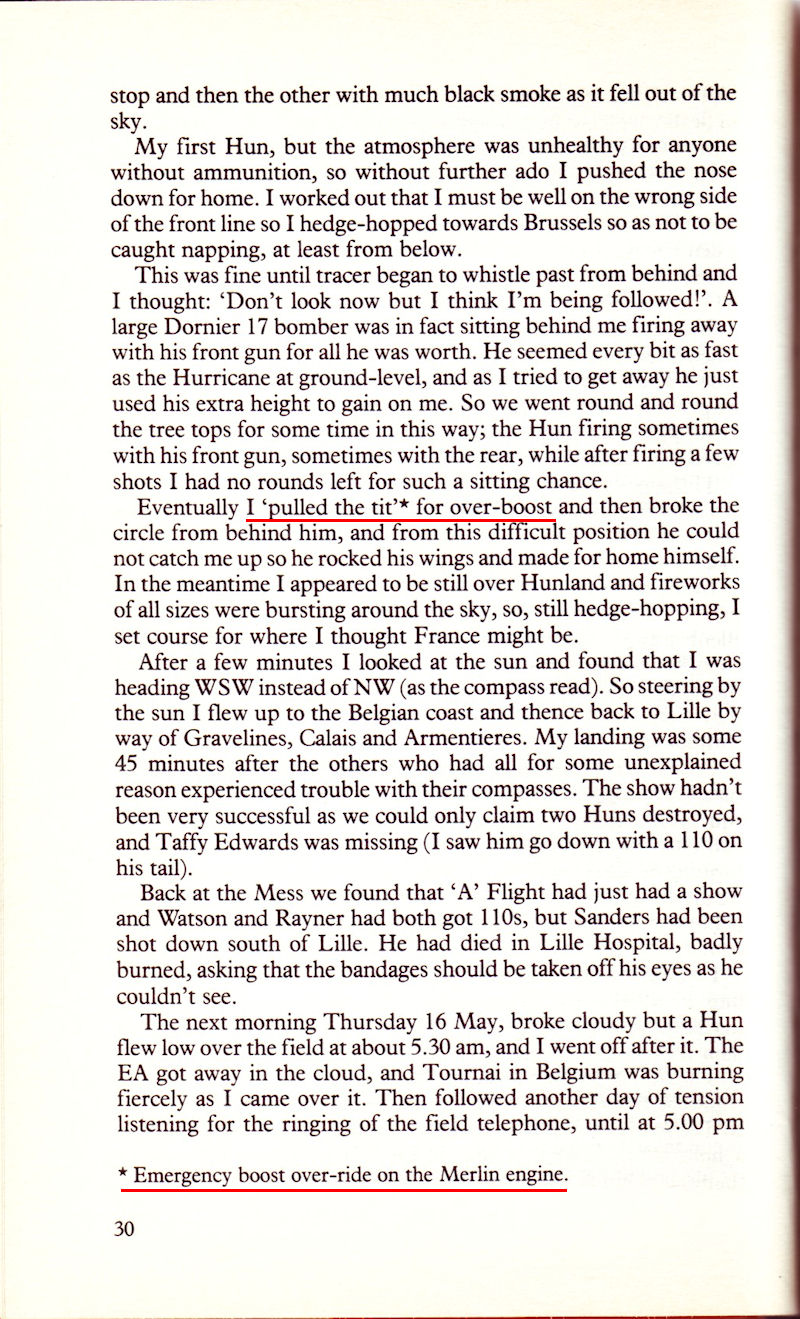 P/O F. B. Sutton, 56 Squadron, 18 May 1940 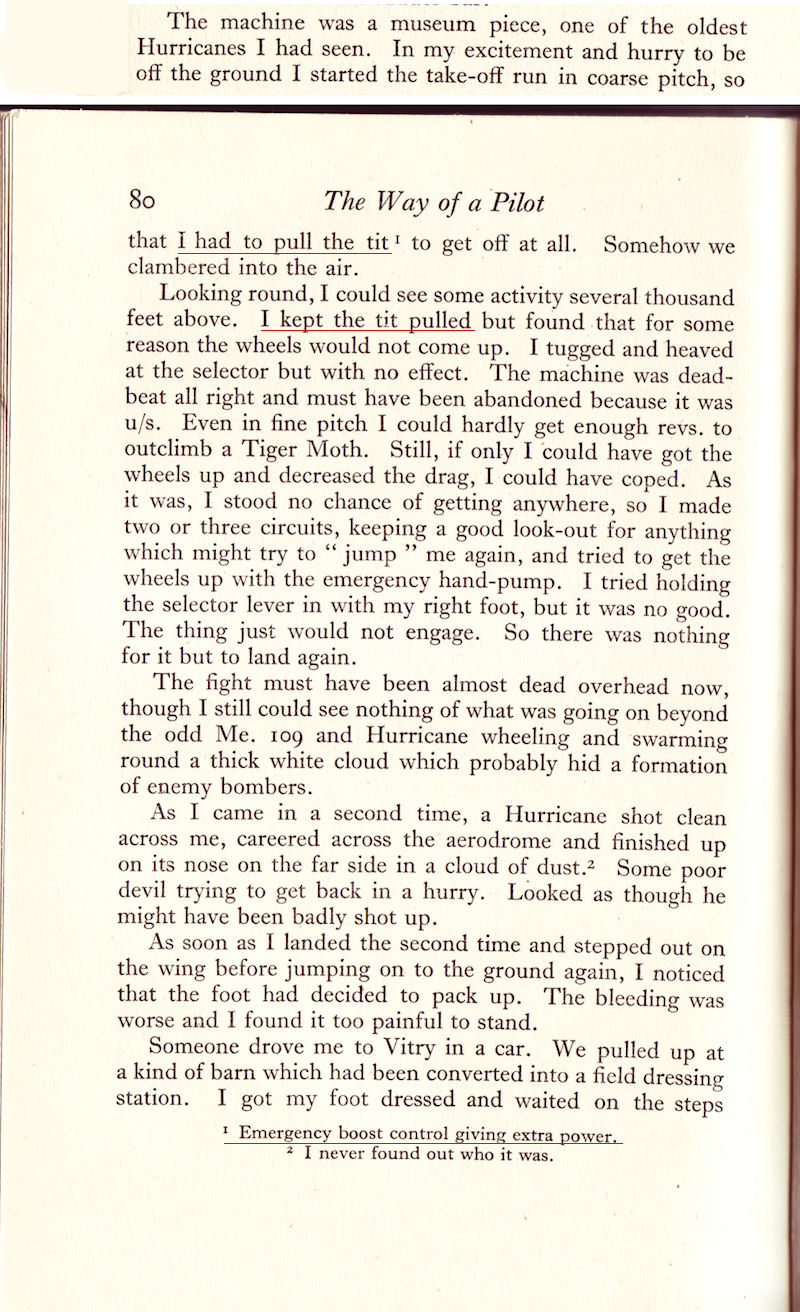 F/Lt. I. R. Gleed, 87 Squadron, 18 May 1940 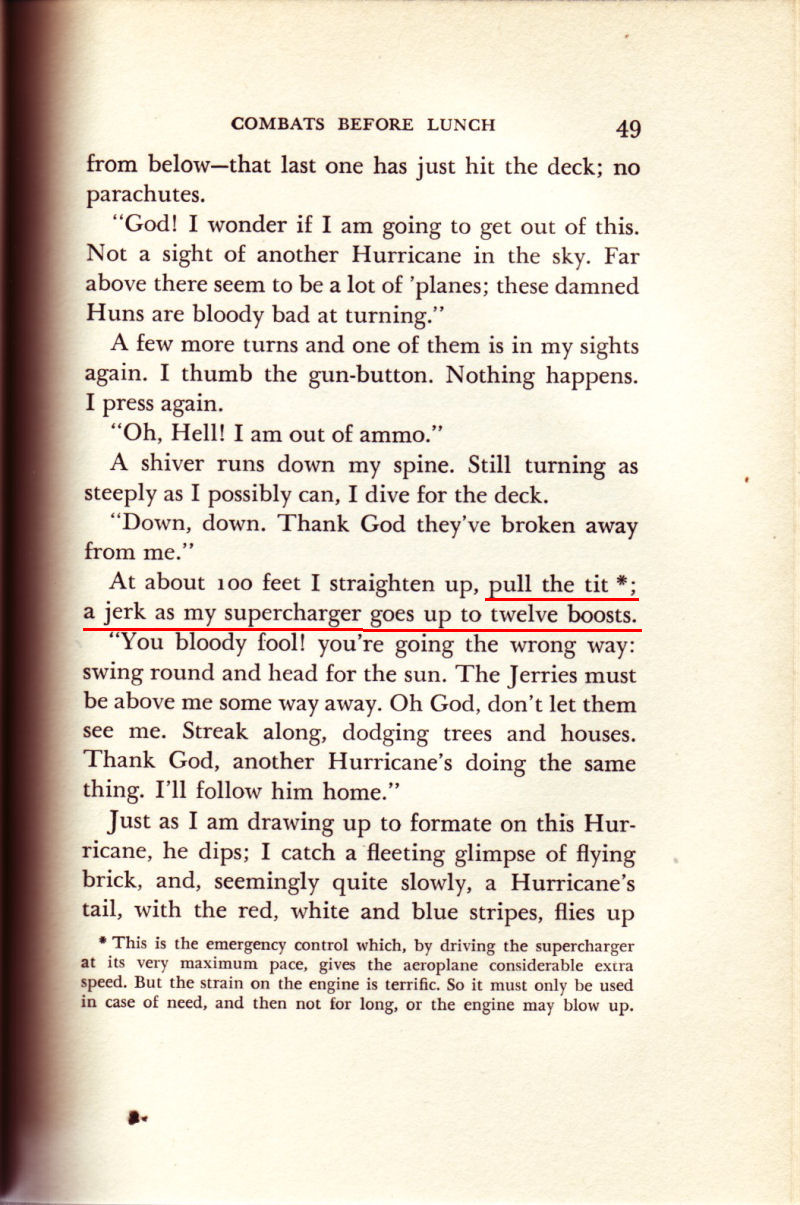 F/Lt. I. R. Gleed, 87 Squadron, 19 May 1940 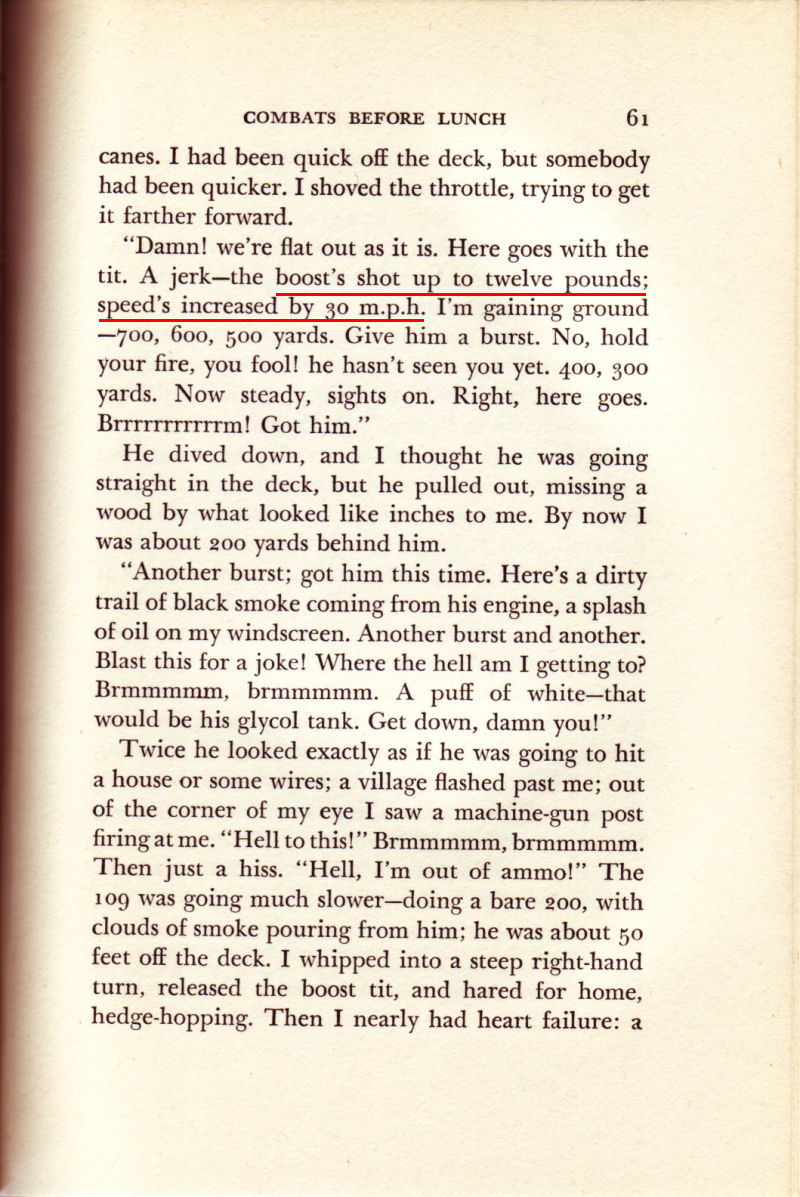 Sgt. L. H. B. Pearce, 79 Squadron, 20 May 1940 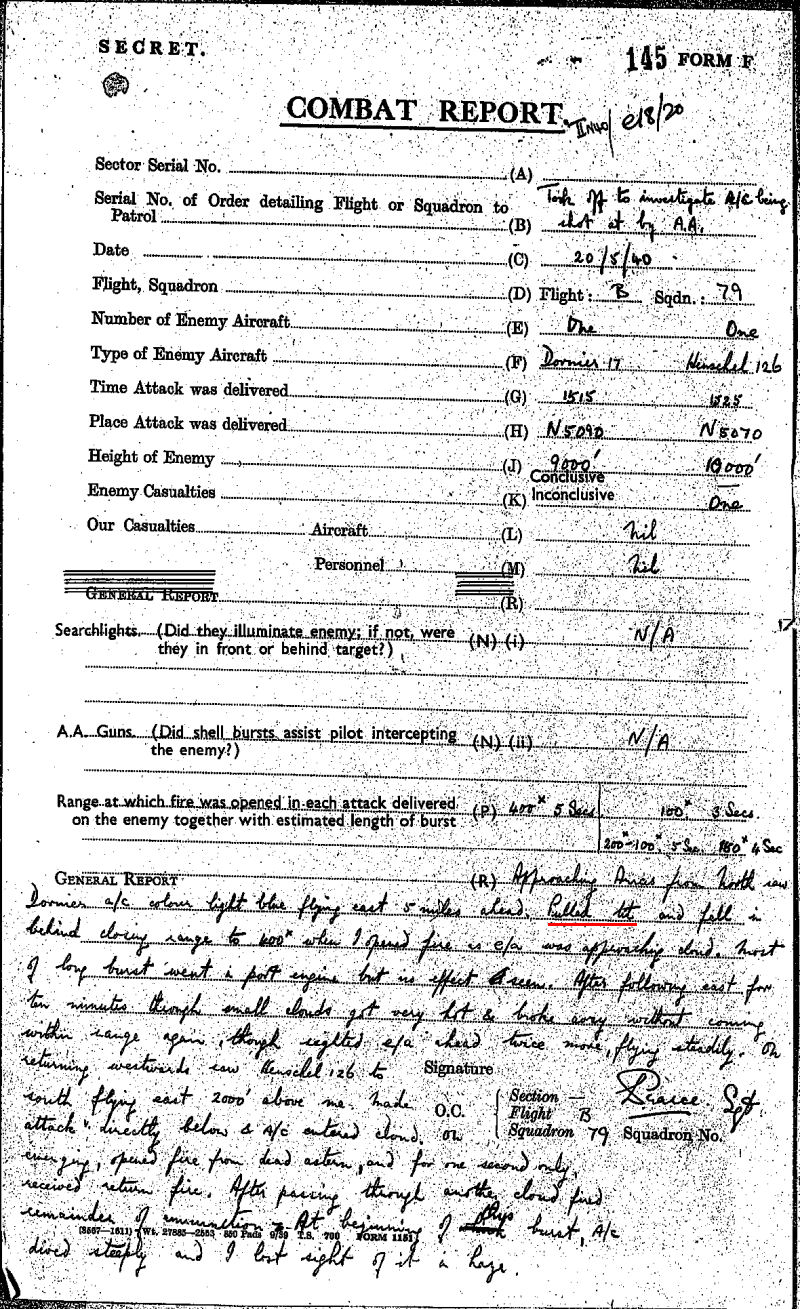
|
|
#8
|
|||
|
|||
|
Quote:
|
|
#9
|
|||
|
|||
|
Quote:
Fair enough: Assuming all Blenheims used 100 octane (six Blenheim units may have used 100 octane in all tanks) Wyton: XV 40 Watton: 82 Wattisham: 107 West Raynham: 101 Blenheim = 479 imp gals Defiant= 97 Hurricane = 90 Spitfire = 85 Total= 751 divided by 4 = 187.75 1 ton 100 octane = 315.5 divided by 187.75 = 1.7 fuel loads "Please note that the 10,000 tons of 100 octane, shown in Table II - Consumption consumed for the period June - Aug 1940, is the monthly average of those 3 months, therefore for the period June - Aug 1940 30,000 tons were actually consumed." (Lane#31 June to August 30,000 tons 100 octane consumed x 1.7 = 51,000 fuel loads divide by 92 days = 554.3 fuel loads per day Sept 14,000 tons 100 octane x 1.7 = 23,800 divided by 30 days = 793.3 fuel loads per day Oct 17,000 x 1.7 = 28,900 divided by 31 = 932.2 fuel loads per day June to Oct = 61,000 tons consumed x 1.7 = 103,700 divide by 153 = 677.7 fuel loads per day consumed on average. 51,364 sorties, day & night from July 10 through Sept 30; some of the most intensive combat took place between these dates. Of course there were quiet periods when far fewer combat sorties were flown by Fighter Command; eg: August 16 & 17, between two days of intensive combat August 15 & 18. 51,364 divided by 13 weeks = 4,280 fuel loads = 611 fuel loads daily average: Even with all Blenheims theoretically using 100 octane fuel, there was still more than enough being 100 octane fuel being consumed - not issued - from June through end of October to supply 100% of FC, and some BC, operations. Once again this is also assuming all aircraft landed with empty tanks and had to be completely refueled, rather than being topped up. Last edited by NZtyphoon; 02-25-2012 at 10:33 AM. |
|
#10
|
|||
|
|||
|
I am not quite sure if I got your calculations right - are you saying that the consumed amount was sufficient for a very rough average of 793.3 fuel loads per day for September 1940 for example?
Now the calculation doesn't account for non-operational flights - this was looked into earlier, at around post no 87. It was found that three s-e Sqns that were looked at flew about 230 hours of training/non-operational flights in a single first week of August 1940: 54 sqn for example: http://www.oldrafrecords.com/records/511/5110313.jpg 32 Squadron flew 60 and-a-half non-operational hours in the first week of August 1940, all of which were transfers to and from their forward base. 43 Squadron flew approximately 10 non-operational hours in the first week of August 1940, namely one transfer of six aircraft and their return and another transfer of seven aircraft, and three night practise flights. 54 Squadron flew approximately 159 non-operational hours This works out as a rough avarage of 76 non-operational flight per Sqn per week, or about 300 hours a month per Squadron.
__________________
Il-2Bugtracker: Feature #200: Missing 100 octane subtypes of Bf 109E and Bf 110C http://www.il2bugtracker.com/issues/200 Il-2Bugtracker: Bug #415: Spitfire Mk I, Ia, and Mk II: Stability and Control http://www.il2bugtracker.com/issues/415 Kurfürst - Your resource site on Bf 109 performance! http://kurfurst.org 
|
 |
| Thread Tools | |
| Display Modes | |
|
|